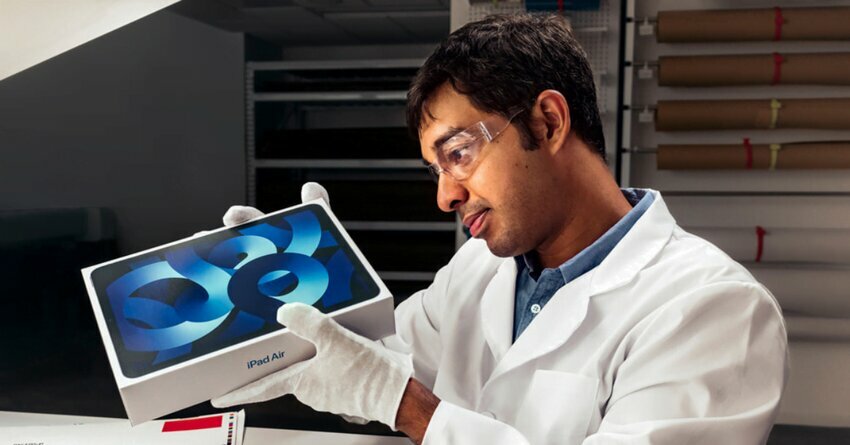 (Credit: Apple)
(Credit: Apple)Apple has announced a major acceleration of its efforts to increase the use of recycled materials in its products. The company has set a new target to use 100% recycled cobalt in all Apple-designed batteries by 2025. This progress brings Apple closer to its ultimate objective of making all products with only recycled and renewable materials, while also advancing the company's 2030 goal of achieving carbon neutrality for every product
“Every day, Apple is innovating to make technology that enriches people’s lives, while protecting the planet we all share,” said Tim Cook, Apple’s CEO. “From the recycled materials in our products to the clean energy that powers our operations, our environmental work is integral to everything we make and to who we are. So we’ll keep pressing forward in the belief that great technology should be great for our users, and for the environment.”
Over the past three years, Apple has significantly increased its use of 100% certified recycled cobalt. In 2022, one-fourth of all cobalt utilized in Apple products came from recycled material, which is a considerable increase from the previous year's 13%.
Cobalt is a crucial material in the batteries of most consumer electronics, including Apple devices. It enables high energy density while also meeting the company's stringent safety and longevity standards. The majority of Apple's use of cobalt comes from the batteries designed for iPhone, iPad, Apple Watch, MacBook, and several other products.
Apple has set a target to eliminate plastics from its packaging by 2025, and innovation has played a crucial role in achieving this goal. Apple has developed fiber alternatives for packaging components such as screen films, wraps, and foam cushioning to stay on track with its ambitious commitment. Nevertheless, the company still has to tackle the remaining 4% of plastic in its packaging footprint by replacing labels, lamination, and other small uses with innovative solutions.
In the past year, Apple has introduced a custom printer to digitally print information directly onto the boxes of iPhone 14 and iPhone 14 Pro, which has reduced the need for most labels. Additionally, the company has implemented a new overprint varnish in the packaging of iPad Air, iPad Pro, and Apple Watch Series 8 that replaces the polypropylene plastic lamination found on boxes and packaging components. As a result, these innovations have helped to avoid over 1,100 metric tons of plastic and over 2,400 metric tons of carbon dioxide.